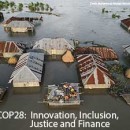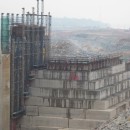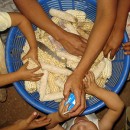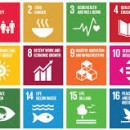Languages
Wednesday, May 15, 2024
News and Views from the Global South
India

Climate Crisis in Mountains: Borderless Struggle for Frontline Communities
For the last three years, Sambhunath Guragain has been waking up every morning to a view he doesn't want to see: discarded agricultural land where he and his family used to grow food, including rice, but the flood in 2021 changed everything. “We don’t have any crops now, but we are farmers,” Guragain said in November 2021, while looking towards a quietly flowing Melamchi river. This was six months after the massive flash flood in Helambu-Melamchi in Sindhupalchowk district in Nepal. After three years, the situation hasn’t changed.
Can Preserving Goa’s Khazans Address Climate Threats?
Growing up in a khazan ecosystem, the traditional agricultural practice followed in the south-western Indian state of Goa, Elsa Fernandes would love sitting in a koddo, a woven bamboo structure for storing paddy. Her family members would pour paddy around her and with the growing pile, she would rise to the top and then jump down with joy.
India’s Farmers Could Use Better Monsoon Forecasts
Agriculture in India need not 'gamble' with the monsoons if accurate weather and climate forecasts are proactively made available to farmers, according to the results of a new experimental study conducted by the University of Chicago.
Why Farmers in India and Pakistan Are Shifting to Natural or Regenerative Farming
Nine years ago, farmer Sultan Ahmed Bhatti gave up tilling the soil and using most fertilizers and pesticides on his farm in Doober Bhattian, Pakistan. His brothers at first derided him. But soon, his first experiment with growing wheat on raised beds was a runaway success. “We produced more wheat than what we grew on ploughed, flat land,” he said.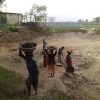
Revival of Hope: How a Remote Indian Village Overcame Water Scarcity
The people of Patqapara Village, a hamlet in India's West Bengal State, were until recently reeling under absolute distress due to water scarcity. The lack of irrigation facilities in this far-flung and inaccessible hamlet had resulted in a steady decline in agricultural activities. With a population of around 7,000, as per government estimates, the village primarily depends on agriculture for its livelihood. However, in recent years, drastic changes in weather patterns, including unseasonal rainfall, delayed monsoons, and soaring temperatures above normal levels, led to the drying up of irrigation canals and wells in the village. This left the local population in chaos, as their cultivable fields were bereft of any irrigation facilities.
How Women in Ahmedabad Slums Are Beating Back Climate’s Deadly Heat
Seema Mali is desperate. She has no defences against this changing climate’s brutal heat. Mali makes fresh flower garland the whole year, but her summer income has been plummeting by 30 percent over the last 8–10 years due to the extreme heat.
Snowless Winter and a Climate Crisis: Kashmir’s ‘Unprecedented’ Weather
Abdul Gani Malik, a 75-year-old goldsmith living in Kashmir’s capital, Srinagar, has witnessed eras of tranquility and turbulence in the Himalayan region. What he has not seen, however, is a snowless Kashmir during the winter.
Hit by Climate Change, Authorities Seek to Improve Saffron Yields in Kashmir
Saffron, the expensive spice from the Kashmir Himalayas, has been facing challenges for years, mostly related to yields and inadequate irrigation compounded by the climate crisis.
This Doctor Helps Himalayan Women Ward off Cervical Cancer
While working as a doctor in the initial months of his medical career in southern India, a telephone call from his home in the Ladakh Himalayas convinced Nordan Otzer to involve himself with cervical cancer awareness.
The Relentless Struggles of India’s Seawall Mammas
The sun is high in the noon sky—humidity unrelenting at 95 percent in this Indian sea-coast village. The monsoon has been deficient; rice paddies are yellowing on the edges from the salty surf misting in on them. Waves now break barely 200 metres from the farms and homes.
Kashmir’s Apple Industry Faces Dire Threats as Climate Change Takes its Toll
Of Kashmir’s seven million inhabitants, a staggering one million rely directly on apple farming. The region is pivotal in India’s apple and horticulture production, contributing to over 70 percent of the country’s apple supply. This not only provides income to farmers but also sustains a vast network of laborers, traders, and transporters within the fruit economy.
Kerala Proved Good Governance Vital in a Pandemic
When COVID-19 claimed millions of lives across India, Kerala state at the southern tip of the subcontinent stood apart for low mortality rates that experts attribute to good governance, a robust public health delivery system and strong civil society support.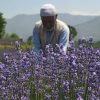
Wrecked by Climate Change, Farmers in Kashmir Shift to Lavender Cultivation
Mohammad Subhan Dar diligently tends to some bright purple plants on a four-acre farm in Bijbehara, a hamlet south of Kashmir’s capital, Srinagar. As you draw nearer, you’ll be mesmerized by the sight of sprawling lavender fields, where about 10 to 15 farmers, including Dar, prepare for a promising harvest.
Human Trafficking: Women Lured by Promise of Jobs, Sold as Brides
It has been over a decade since 32-year-old Rafiqa (not her real name) was sold to a villager after being lured by the promise that she would be employed in the handicrafts industry of Indian-administered Kashmir.
Elevating Farmers’ Income Through Organic Poultry Rearing
Even after toiling hard for an entire year, Shivaji Rao, a 37-year-old farmer, would find it hard to cover the basic expenses of his family. He cultivates maize from his one-and-a-half-acre land in India’s Southern State of Telangana.
Alleviating Urban Poverty Through Livelihood Generation
In a bid to tackle the complexities of urban poverty, the Government of Bihar’s Rural Livelihoods Promotion Society (BRLPS) has launched Satat Jeevikoparjan Yojana Shahari (SJY Urban). The program will include a time-bound series of multifaceted interventions addressing food security, social inclusion, and sustainable economic livelihoods to enable participating households to achieve a better standard of living.
Flooding, Water Insecurity Looms as Indian Kashmir’s Titanic Water Bodies Shrink
Sadiq Dar, 68, is surprised how the heavy siltation of Wular Lake has turned many of its areas into land masses. “When we were growing up, we would only see water in this lake. Now, we see cattle grazing in it while a large portion is also being used by children for playing cricket,” he tells IPS.
Himalayan Monsoon Disaster: Climate Change Colludes with Bad Development
As torrential rains, cloudbursts, floods, and landslides continue to wreak colossal damage and claim lives in Himachal Pradesh, India’s Himalayan foothill provinces. The question everyone is asking is: why is this happening?
Empowering Women in Assam: Livestock Farming Brings Economic Relief Post-COVID
Seema Devi is a 39-year-old woman hailing from India's northeastern state of Assam. She lives in a village called Milonpur, a small hamlet with no more than 1 000 inhabitants. While most men from the village, including Devi's husband, move to cities and towns in search of work, women are left behind to take care of the house and kids.
Quest for Safe Water in One of India’s Most Isolated Villages
Simita Devi spent over ten days in a government-run hospital a year ago anxiously watching her critically ill nine-year-old daughter, Gudiya, who was diagnosed with typhoid. Gudiya was so sick she even went into a coma for a day. Medical staff attending to the child said she contracted the disease from drinking contaminated water.
Massive Fish Mortality Strikes Kashmir’s Lake, Threatens Livelihoods
Abdul Lateef Dar, a 45-year-old man living on the outskirts of Kashmir's renowned Dal Lake, relies on the lake's fish for food and income.Next Page »


